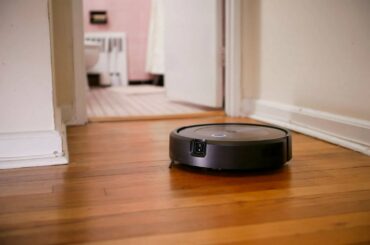Contents
What are these PoE lights?
Power over Ethernet (PoE) lighting is a lighting system that utilizes Ethernet cables to power and control lighting fixtures, sensors, and other devices. Instead of traditional electrical wiring, PoE lighting systems rely on data cables (typically Cat 5e or Cat 6) to deliver both data and electrical power to the connected devices. But what are the advantages of PoE lighting? Let’s figure it out.
Main Component of the PoE lighting?
Here are the main components and elements of a PoE lighting system:
- Light Fixtures: These are the actual light-emitting devices, such as LED luminaires, that provide illumination. PoE-compatible fixtures are designed to be powered and controlled using PoE technology.
- Ethernet Cabling: PoE lighting relies on standard Ethernet cabling for both data and power transmission. The cabling infrastructure connects the fixtures to a central network switch or PoE injector.
- PoE Switch or Injector: The PoE switch or injector is responsible for delivering electrical power over the Ethernet cables. It injects power into the Ethernet cable, allowing devices like light fixtures to receive power through the same cable used for data communication.
- Control Software: PoE lighting systems often include software or a Building Management System (BMS) that provides centralized control and management of the lighting. Users can adjust lighting levels, set schedules, and monitor the system’s performance through the software interface.
- Sensors: PoE lighting systems often incorporate various sensors, such as occupancy sensors and light sensors. These sensors provide data to the control system, allowing for intelligent lighting control based on occupancy and ambient light conditions.
- Dimmers and Color Tuning: Some PoE lighting systems support dimming and color tuning capabilities, allowing users to adjust the brightness and color temperature of the lighting to meet specific needs or preferences.
- IoT Devices: PoE lighting infrastructure can also power and connect other Internet of Things (IoT) devices, such as security cameras, environmental sensors, and access control systems. This integration enhances building automation and data collection capabilities.
- Centralized Control Interface: Users can access and control the lighting system through a centralized interface, often accessible from a computer or mobile device. This interface allows for real-time monitoring, scheduling, and customization of lighting settings.
- Power Sourcing Equipment (PSE): In PoE systems, the PSE refers to the device that supplies power to the Ethernet cable. This can be a PoE switch or injector, as mentioned earlier.
- Powered Devices (PD): The powered devices in a PoE lighting system are the fixtures, sensors, and other equipment that receive power over the Ethernet cable. These devices must be PoE-compatible to function with the system.
- Gateway or Bridge: In some cases, a gateway or bridge device may be used to connect the PoE lighting system to other building systems or protocols, such as DALI (Digital Addressable Lighting Interface) for advanced lighting control.
PoE lighting systems offer flexibility, energy efficiency, and smart control capabilities that make them well-suited for various applications, including office spaces, retail environments, industrial facilities, and smart homes. They can contribute to energy savings, reduce installation complexity, and provide enhanced lighting control and automation options.
What are the advantages of PoE lighting?
Power over Ethernet (PoE) lighting offers several advantages, making it an increasingly popular choice for both residential and commercial lighting applications. Here are some of the key advantages of PoE lighting:
Energy Efficiency:
PoE lighting systems are highly energy-efficient. They can be easily integrated with energy-saving LED fixtures and sensors to optimize lighting levels based on occupancy and natural light, reducing energy consumption and costs.
Cost Savings:
PoE lighting can result in significant cost savings over time due to reduced energy consumption, lower maintenance costs, and simplified installation. Since data and power are transmitted over a single Ethernet cable, installation is often faster and requires less wiring, reducing labor costs.
Scalability:
PoE lighting systems are highly scalable. It’s easy to add or modify lighting fixtures and sensors without the need for extensive rewiring. This makes them ideal for spaces where flexibility and adaptability are important, such as offices, retail stores, and open-plan environments.
Centralized Control:
PoE lighting can be controlled centrally through a Building Management System (BMS) or lighting control software. This centralized control allows for easy customization of lighting schedules, dimming levels, and color temperatures, enabling better energy management and user comfort.
Dimming and Tunable Lighting:
PoE lighting systems can support dimming and tunable lighting, allowing users to adjust the intensity and color temperature of the lighting to suit specific tasks or preferences. This can improve occupant comfort and productivity.
Integration with IoT Devices:
PoE lighting infrastructure can serve as a backbone for the Internet of Things (IoT). Sensors, cameras, and other IoT devices can be powered and connected to the network through the same PoE infrastructure, enabling data collection, automation, and smart building applications.
Improved Maintenance:
PoE lighting systems can provide real-time data on the status of individual fixtures and sensors. This allows for proactive maintenance and rapid identification of issues, reducing downtime and maintenance costs.
Enhanced Security:
Since PoE lighting is connected to the network, it can be integrated with security systems. This allows for advanced security features, such as motion detection, access control, and remote monitoring.
Reduced Heat Emission:
PoE lighting generates less heat compared to traditional lighting systems. This can help maintain a more comfortable indoor environment and reduce the load on HVAC systems, leading to additional energy savings.
Sustainability:
PoE lighting aligns with sustainability goals by reducing energy consumption and supporting green building initiatives. Many PoE lighting systems are also made with recyclable materials.
Compliance and Reporting:
PoE lighting systems can provide data and reports on energy usage, lighting levels, and occupancy patterns, which can be valuable for regulatory compliance and sustainability reporting.
Easy Upgrades:
As technology evolves, it’s relatively easy to upgrade PoE lighting systems with newer, more efficient fixtures and sensors without major infrastructure changes.
While PoE lighting offers numerous advantages, it’s important to consider factors such as initial costs, compatibility with existing infrastructure, and the specific needs of your application before deciding to implement it.
How to use of PoE lighting?
Using Power over Ethernet (PoE) lighting involves several steps, from planning and installation to configuring and controlling the system. Here’s a general overview of how to use PoE lighting effectively:
Planning and Design:
-
- Assess your lighting needs and goals: Determine the lighting requirements for the space, including illumination levels, color temperature, and any specific lighting control needs (e.g., dimming, color tuning).
- Identify fixture locations: Plan where you’ll install PoE-compatible light fixtures and any necessary sensors or controls.
- Create a network design: Design the Ethernet cabling infrastructure, including cable routes and connections to a central network switch or PoE injector.
- Select PoE-compatible components: Choose PoE-compatible light fixtures, sensors, and other devices that meet your requirements.
Installation:
-
- Install Ethernet cabling: Deploy Ethernet cables according to your network design. Ensure proper termination and cable management.
- Install PoE switches or injectors: Connect PoE switches or injectors to the network infrastructure. These devices will supply power to the Ethernet cables.
- Mount fixtures and sensors: Install PoE-compatible light fixtures and sensors in their designated locations. Ensure they are securely mounted and properly wired to the Ethernet cables.
Configuration:
-
- Configure the PoE switch: If needed, configure the PoE switch or injector to provide the appropriate power levels to your fixtures and devices. Some switches may support different PoE standards, so adjust settings accordingly.
- Set up the control system: If your PoE lighting system includes a central control system or software, configure it to recognize and manage the fixtures and sensors in your installation. This may involve defining zones, schedules, and sensor triggers.
Testing:
-
- Test individual fixtures and sensors: Verify that each PoE-compatible fixture and sensor is receiving power and responding to control commands as expected.
- Conduct system tests: Test the entire PoE lighting system to ensure proper functionality, including dimming, color tuning, and sensor-triggered actions.
- Address any issues: If you encounter problems during testing, troubleshoot and resolve them as necessary.
Operation and Control:
-
- Control the lighting system: Use the centralized control interface (e.g., software or a Building Management System) to adjust lighting levels, set schedules, and customize lighting settings based on occupancy and daylight conditions.
- Monitor performance: Regularly monitor the system’s performance and energy usage to ensure it aligns with your goals for energy efficiency and comfort.
- Update configurations: As needs change or as you gather data on lighting usage, update the system configurations to optimize lighting control and energy savings.
Maintenance and Support:
-
- Perform routine maintenance: Regularly inspect and maintain the PoE lighting system to ensure all components are functioning correctly. Replace any faulty fixtures or sensors as needed.
- Provide user training: Train building occupants or facility managers on how to use the PoE lighting control interface effectively and troubleshoot common issues.
Using PoE lighting effectively involves careful planning, proper installation, and ongoing management to ensure the system meets your lighting requirements and energy-saving goals. Regular maintenance and adjustments can help maximize the benefits of PoE lighting over time.





